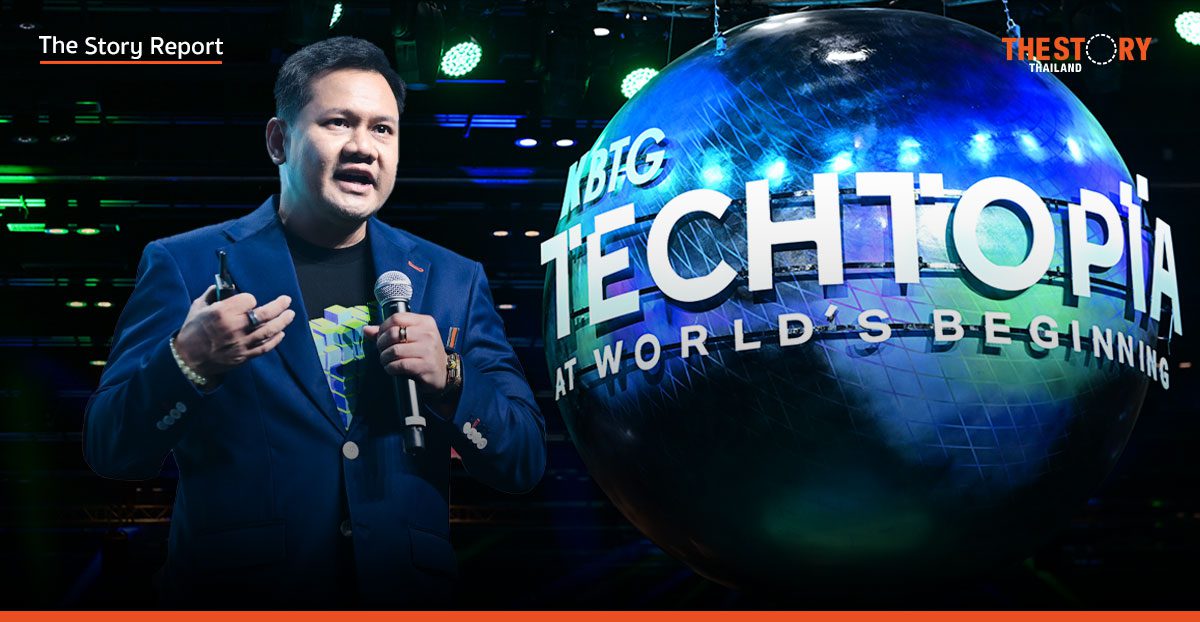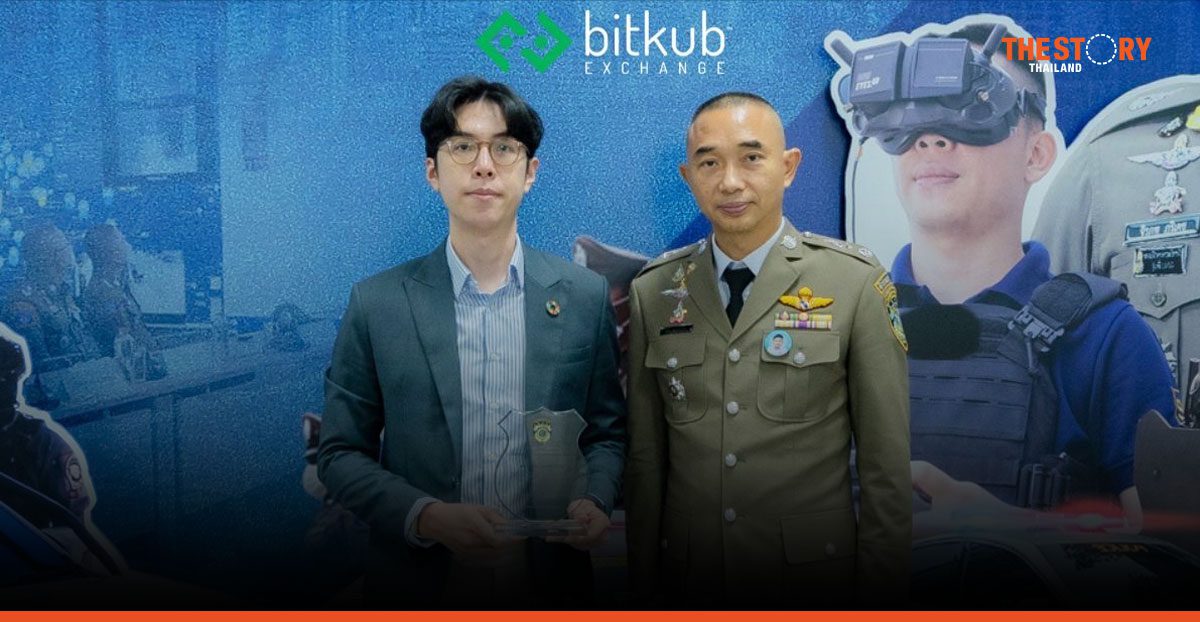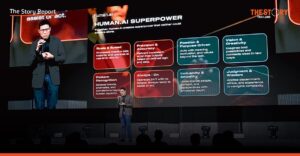On October 23rd, KBTG activated a new core banking system for Kasikornbank (KBank) after 22 months of intensive development and testing.
This new system, known as the Horizontal Core Banking project, expands the core banking infrastructure to accommodate future growth, rather than replacing the existing system. This expansion will enable KBank to support up to 60 million accounts until 2031.
The core banking system is the heart of any banking operation. The systems that interact with it are like organs in the body, and the connections between them are like the blood vessels that link everything to the heart. Adding another core banking system is akin to adding another heart, effectively doubling the system’s capacity.
KBTG and KBank chose to add a new “heart” to the existing system while ensuring that all of the bank’s applications remained operational without interruption. This is like performing major surgery without anesthesia. How did KBTG and KBank achieve this? Why did they choose to expand the core banking system instead of replacing it? The Story Thailand explores these questions with KBTG’s executive team.
Target ROE: Zero Downtime
KBank’s target Return on Equity (ROE) hinges on the stability of its financial systems. The current core banking system needs to be enhanced to handle the rapid growth in transaction volume and maintain the quality and responsiveness of each transaction. This led to the Horizontal Core Banking project, which “adds” a core banking system to the existing one to enhance the capabilities of the highly stable system that already supports one-third of the country’s transactions.
The challenge of this project is to enhance the core banking system without disrupting KBank’s financial transactions for even a single second.
The core banking system is the foundation of banking operations, a crucial system that interacts with numerous other bank systems. Any change to the core banking system will impact these other systems to varying degrees. However, KBTG’s task was to strengthen the core banking system without causing any disruptions to user transactions.

Voranuch Dejakaisaya, Executive Chairman of KBTG, states that KBank’s goal is to achieve a double-digit ROE by 2026. KBTG’s strategy for 2025 is to support KBank’s growth by ensuring the robustness of its core banking system and preventing any disruptions. Currently, K PLUS transactions account for one-third of all financial transactions in Thailand, or about 30%. Therefore, any issue with KBank’s systems would affect one-third of the country.
“KBTG’s objective was to ensure that the mobile banking system would not crash,” Voranut explains. “The difficulty in implementing a new core banking system lies in managing the surrounding systems. When changing or upgrading the core banking system, it’s crucial to ensure that it does not impact any of the connected channel systems.”
The decision to enhance the core banking system rather than replace it was a strategic one for KBTG and KBank.
In the past, KBank has replaced its core banking system twice, each time about 10 years apart. The first time was in 2005 when technology began to play a larger role in banking, prompting KBank to undergo a major re-engineering. The second time was in 2015 with the K-Transformation initiative.
Neither of these previous replacements involved KBTG. Both times, KBank relied on technology vendors working alongside its internal technology team. This time, however, KBank has its own strong technology team in KBTG, leading to the decision to add a “heart” instead of replacing it.
Given the ROE target of 100, KBank could not afford to halt operations to implement a new core banking system. Adding a core banking system is different from replacing one, which would require a two-day shutdown of all operations.
The Time to Upgrade Core Banking
Over the past five years, Kasikornbank (KBank) has experienced significant growth. In 2024, the bank saw a 2.3% increase in its customer base (a substantial 37% surge in 2020), reaching a total of 24.3 million customers.
The volume of transactions through the K PLUS mobile application also grew by over 20% in the past year, reaching an impressive 11.6 billion transactions. This has solidified K PLUS’s position as the leading mobile banking platform in Thailand. As a result, KBank’s overall performance in 2024 yielded a net profit of 48.598 billion baht, a 14.6% increase from the previous year.
KBank currently operates two mobile banking applications: K PLUS, with 23 million users, and MAKE by KBank, with 2.95 million users. Both of these apps, experiencing continuous growth, converge at the core banking system.
With the explosive growth of mobile banking, transaction volumes have surged across all channels, particularly on mobile (K PLUS). While the monetary value per transaction has decreased, the sheer volume of transactions has skyrocketed (driven by both existing and new users). ATM usage remains consistently high. Therefore, it’s time to enhance the capabilities of the core banking system to not only handle the increased transaction load but also ensure exceptional transaction speed and efficiency.
“While KBank’s core banking system remains modern, the multitude of surrounding applications necessitates a review of the core banking system to ensure it can seamlessly handle the massive increase in transaction volume without any disruptions or system failures.”
The Largest Project Ever Undertaken
The core banking system is the heart of any banking operation, an essential system for all banks. KBank has had a core banking system since its inception. In 1993, the bank underwent a major re-engineering of its core banking system. A decade later, as the system began to age, KBank launched its K-Transformation initiative to replace the core banking system. This involved extensive research starting in 2003, implementation in 2005, and completion in 2015 (at a time when KBank’s customer base was significantly smaller than it is today).
The current core banking system, in use since 2015, is a modern system that represented a significant investment at the time. While K-Transformation was a large-scale project involving a substantial workforce and investment due to the complete system replacement, this new project is the largest technology investment KBTG has ever undertaken, totaling 4.5 billion baht and spanning 22 months.

Jarung Kiatsupapong, Vice Chairman of KBTG, notes that while the elimination of interbank transfer fees in 2018 marked the first turning point in the exponential growth of financial transactions, KBank’s introduction of new features in K PLUS and the COVID-19 pandemic were two additional catalysts that further accelerated the growth of mobile financial transactions.
The peak day for K PLUS transfers saw 260 million transactions. Thailand boasts one of the highest mobile banking adoption rates globally, and K PLUS is the most widely used mobile banking application in the country.
In 2021, KBank introduced another mobile app, MAKE by KBank, targeting a younger demographic. This app has also experienced continuous growth, bringing KBank’s total user base to nearly 30 million (23 million for K PLUS and 2.95 million for MAKE by KBank).
In 2023, KBank upgraded its data center to accommodate 8,000 servers. In October of the same year, the bank further enhanced its systems by adding another core banking system, effectively doubling its capacity.
During the 2015 core banking system replacement, KBank had to suspend services for two full days. To avoid such disruptions this time, KBank opted to add another core banking system instead of replacing the existing one.
Changing or expanding the capabilities of a core banking system is a complex undertaking. KBank has successfully added another “heart,” and these two hearts will enable KBank to maintain its market-leading position in financial services until 2031.
KBank acquires 3 million new customers annually, while existing customers open an additional 2 million accounts, resulting in 5 million new accounts per year and an annual increase of 3 to 4 billion financial transactions. The addition of a second core banking system enables KBank to accommodate the growing customer base and transaction volume until 2031, when it is projected to have approximately 50 to 60 million customers in Thailand, representing nearly 90% of the country’s population.
The challenge lies in ensuring that this new core banking system can seamlessly integrate with the 183 other systems that interact with the core banking system, such as payment systems, ATM systems, and branch systems.
Implementing the new core banking system required coordination with 183 systems and involved over 1,000 individuals from more than 50 departments across KBank and KBTG. The project required an investment of 4.5 billion baht and took 22 months to complete. With 21 full-scale rehearsals, the implementation of the new core banking system proceeded flawlessly, with no downtime whatsoever. Customers experienced uninterrupted financial services, unaware of the significant upgrade happening behind the scenes.
Four Keys to Success in Adding a Core Banking System
In addition to the core banking system itself, the project team had to ensure seamless integration of 183 systems with the new core banking system and enhance the functionality of the “brain,” known as the Core Banking Gateway, to efficiently direct the various systems to operate with both core banking systems.
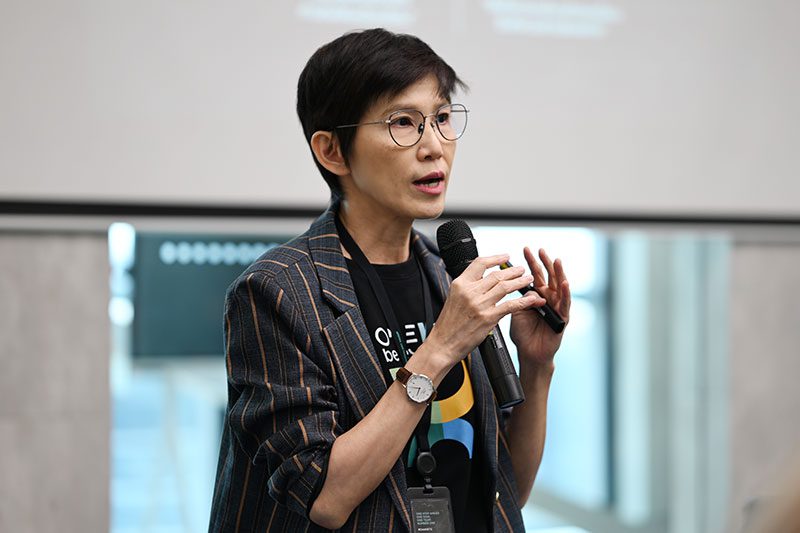
Noppawan Patipanjumrad, Managing Director of KBTG, highlights four key factors behind the success of the core banking system expansion:
Team Collaboration: Ensuring effective collaboration among the 1,000+ individuals from 50 departments across KBTG and KBank who were involved in the 183 systems was a challenge.
The solution was to establish a Business Deployment Team, comprising business representatives from KBank and technology experts from KBTG. This team served as a bridge between the project team and the bank, communicating the complexities of the core banking system implementation, the work plan, the stakeholders involved, and the necessary collaboration.
Additionally, a Core Team Agent team of 8-9 individuals was created to understand the impact and relationship of the 183 application systems with the core banking system. This team communicated the plan to the teams responsible for managing the 183 systems, ensuring that they understood and effectively followed the plan.
“Both the Business Deployment Team and the Core Team Agent team were strategic initiatives to bring business and IT teams together with a shared goal.”
Change Management: A change management team, composed of senior executives with a comprehensive view of both business and technology operations, was established to manage the more than 200 projects related to the core banking system. This ensured that these projects could seamlessly integrate with the core banking system expansion while allowing business operations to continue uninterrupted.
Test Strategy: The testing phase spanned nearly 12 months. A key aspect of the test strategy was the development of specialized tools, including a Data Validation and Comparison Test, to automate the testing of all systems without manual intervention. Additionally, tools were developed to monitor how the core banking system would respond to anomalies in any of the systems and to verify the effectiveness of the planned mechanisms.
Deployment Strategy: The deployment strategy emphasized “practicing as if it were real and acting as if it were practice.” This involved 21 realistic simulations over six months, with work continuing every day, both day and night.
On the actual launch day, the system was rolled out in eight phases, divided into three main groups. The first two phases involved the core components (Core Banking and Core Banking Gateway) and the integration of 1,000 tasks. The third to sixth phases focused on integrating all of the bank’s electronic channels. The final two phases covered the integration of all branch systems.Upgrading Core Banking Without Service Disruption
Modern core banking systems don’t necessarily require replacing existing systems. Instead, they can be added to enhance the capabilities of the current setup.
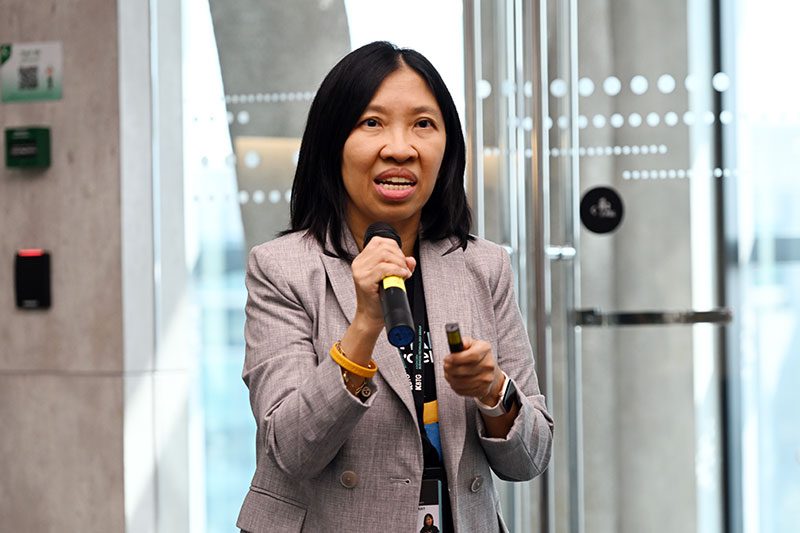
Kaewkarn Pinjinda, Deputy Managing Director of IT Service Availability at KBTG, emphasizes the importance of a resilient core banking system. Their approach is guided by the principle of “preparing for the worst and working towards the best.” This involves two key aspects: risk management and incident/problem management, and change management.
Risk management and incident/problem management focus on preventing system issues and swiftly restoring service in case of disruptions. This includes identifying the root causes of incidents and implementing preventive measures to avoid recurrence.
Change management is crucial for defining work plans and leveraging technology tools for effective management.
“The Incident team was involved in the Core Banking project from the very beginning, conducting 21 realistic simulations without a single incident occurring,” says Kaewkarn. “By practicing as if it were the real thing, taking real action as if we were practicing, and preparing for the worst while striving for the best, this Horizontal Core Banking project proceeded according to plan without any hiccups, delays, or downtime – not even for a second. We were able to close the War Room within one week after the system launch, compared to the initially planned three months. This success was achieved through our ‘One Team, One Goal’ philosophy and our commitment to ‘One Step Ahead Forever.’”
The 3Cs Strategy

Phuwanon Songwutticholothorn, Assistant Managing Director of Project Management at KBTG, reveals that the core banking system upgrade project employed a 3Cs strategy: Communication to build trust, Collaboration to foster teamwork, and Commitment to ensure results.
This large-scale project involved over 1,000 individuals, more than 2,000 meetings, discussions of 183 work systems with over 2,000 connections, over 10 months of testing with 30,000 test cases, and coordination with more than 200 other projects.
Communication was paramount in establishing trust among the vast number of people involved, emphasizing the project’s importance and complexity, and encouraging collaboration and participation.
The Next Generation of Core Banking Systems
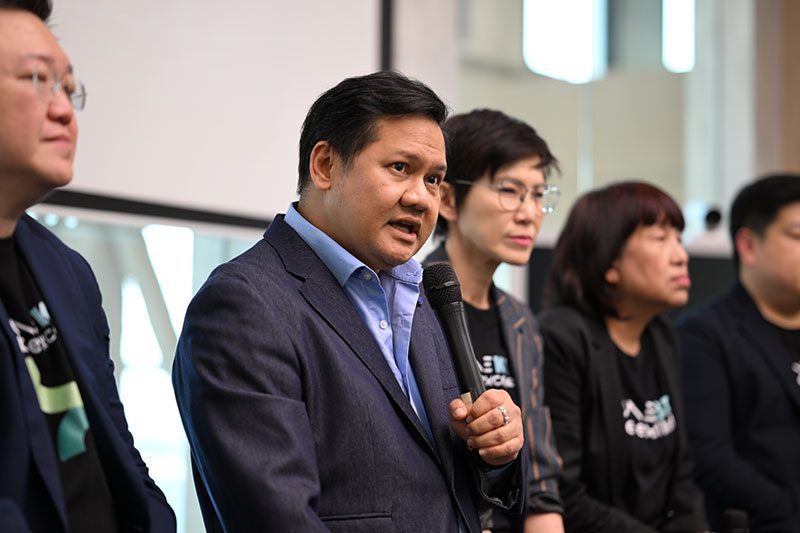
Ruangroj Poonpol, Group Chairman of KBTG, highlights the significance of trust in the financial industry. The expansion of the core banking system through horizontal scaling underscores the commitment to maintaining the stability and robustness of Kasikornbank’s core banking system (Brilliant Basics) while ensuring a cost-effective investment.
While the project involved a substantial investment of 4.5 billion baht, it is considered a relatively modest sum compared to other banks’ investments in enhancing their core banking systems. This upgrade positions Kasikornbank as a market leader until 2031.
Given that Kasikornbank handles approximately one-third of the country’s financial transactions, cost optimization per transaction is critical. Horizontal core banking enables increased capacity with a cost-effective approach.
“The world is transitioning from a knowledge-based society to a trust-based society,” Ruengroj concludes. “In the banking sector, trust is paramount. If a banking app crashes or loads slowly, trust is eroded. This core banking system expansion aligns with KBTG’s AI strategy. The stability of the core banking system reinforces customer trust, which is even more crucial in the age of AI.”





